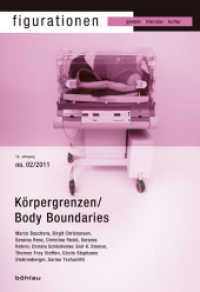Full Description
Prepare for one of the fastest growing careers in health care; or add to your current skills with the 3rd edition of Phlebotomy: From Student to Professional. Soft skills are emphasized throughout with special attention focused on expectations for students not only in the classroom but as they transition to working with patients.. Material on basic blood specimen collection procedures; non-blood collection procedures; and specimen handling has been updated and expanded; preparing you to compete in this hot job market.
Contents
List of Procedures / ixPreface / xi1. The Student's Role in the Classroom.Phlebotomy in the Past. Professionalism. Ethics. Values. HIPAA. Patient Rights. HIPPALegal Issues. Risk Management/Quality Assurance. Healthcare Facilities Utilizing. Phlebotomists. Clinical Laboratory Departments. Study Skills. Clinical Laboratory Expectations.2. The Student's Role in the Clinical Environment.OSHA. Biological Hazards. Engineering Controls. Work Practice Controls. Latex Allergies. Chemical Safety. Electrical Safety. Radiation Safety.PART II. BLOOD AND URINE COLLECTION.3. The Circulatory System.The Heart. Blood Vessels. Blood. 4. Blood Collection Equipment.Venipuncture Equipment. Capillary Puncture Equipment. 5. Collection by Routine Venipuncture. Organization of Work Load. Interacting with the Customer. Preparing for the Venipuncture. Performing the Venipuncture. 6. Collection by Skin Puncture. Choosing the Skin Puncture. Composition of Skin Puncture Blood. Site Selection. Preparing the Site. Collection Devices. Performing a Fingerstick. Performing a Heelstick. 7. Special Blood Collection Procedures. Newborn Screening. Blood Cultures. Glucose Tolerance Testing. Bleeding Time Test.8. Special Considerations.Pediatric Blood Collection. Elderly Blood Collection. Alternate Venipuncture Sites. Vascular Access Lines. Physiological Venipuncture Reactions. Patient Inquiries. Patient-focused Care. Point-of-Care Testing.9. Urine Tests.The Urinary System. Urine. Urine Collection.10. Common Laboratory Tests. 50 Common Tests. 11. Communication Skills for the Phlebotomist. The Speaker . The Listener . The Observer. Telephone Techniques. 12. Conflict Management Skills. Conflict Styles . Conflict Management. Problem Solving. 13. Becoming an Employee. Healthcare Customers. Customer Satisfaction. Preparing for Professionalism. Phlebotomy Certification. Researching Potential Employment. Successful Employee Qualities.References. Glossary. Appendices A.Phlebotomy Proficiency Checklist.







